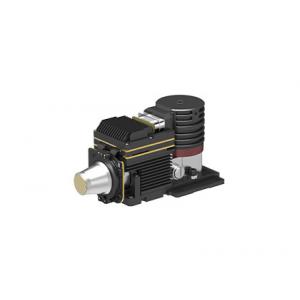
Add to Cart
320x256 / 30μm Cooled Infrared Camera Module with 55mm Lens for VOCs Gas Leak Detection
Volatile Organic Compounds, or VOCs, are gases that are emitted into the air from products or processes. Some are harmful by themselves, including some that cause cancer. In addition, they can react with other gases and form other air pollutants after they are in the air.
GAS330 is a cooled infrared thermal imaging module specially designed for gas leakage detection. It integrates 320x256 / 30µm MCT cooled MWIR infrared detector and utilizes spectral wavelength filtering technology to visualize the invisible VOCs that cannot be seen by naked eyes.
Camera manufacturers can design their own gas leak detection camera based on this module easily and efficiently.
Global Sensor Technology is a supplier of infrared detectors sensors and OEM thermal camera cores. We have more than 10 years of experience in the infrared thermal imaging industries. We have professional after-sales service team to provide customers with professional reply. For any questions or problems, please contact us at any time, we will be in the first time for you to answer.
- Resolution: 320x256
- Pixel Pitch: 30µm
- NETD≤15mK, High Sensitivity
- Spectral Response: 3.2µm±0.1µm~3.5µm±0.1µm
- Wavelength Customizable Based on Different Requirements
- Integrate with DVP/CameraLink Interface Easily
| Model | GAS330 |
| IR Detector Performance | |
| Resolution | 320x256 |
| Pixel Pitch | 30μm |
| Cryocooler | RS058 |
| Spectral Range | 3.2μm±0.1μm~3.5μm±0.1μm MW |
| Cooling Time (20°C) | ≤8min |
| NETD (20°C) | ≤15mK |
| Image Processing | |
| Frame Rate | 30Hz |
| Dimming Mode | Linear/Histogram/Mixed |
| Digital Zoom | ×1/×2/×4 |
| Image Direction | Horizontally/Vertically/Diagonally Flip |
| Image Algorithm | NUC/AGC/IDE |
| Electrical Specification | |
| Standard External Interface | J30JZ 25pin |
| Analog Video | PAL |
| Digital Video | 16bit RAW/YUV: 16bit DVP/Cameralink Output |
| External Sync | Frame External Sync: RS422 Level |
| Communication | RS422, 115200bps |
| Power Supply | 20~28VDC |
| Stable Power Consumption | 12W |
| Dimension (mm) | 155×67×80 |
| Weight | ≤900g |
| Operation Temperature | -40°C ~ +60°C |
| Vibration Magnitude | Vibration: GJB Vehicle-mounted High Speed Transport Shock: Half-sine Wave, 40g 11 ms, 3 Axis 6 Direction 3 Times Each |
| Optical Lens | |
| Optional Lens | Fixed Zoom: 23mm/F1.5; 55mm/F1.5 |
The GAS330 gas leak detection thermal imaging camera is used for visiualizing the invisible VOCs (volatile organic compounds) and detecting gas leakage such as: Methane, Ethane, Propane, Butane, Pentane, Hexane, Heptane, Octane, Ethylene, Propylene, Isoprene, Methanol, Ethanol, Butanone, Benzene, Toluene, Xylene, Ethylbenzene etc.

1. What is NETD?
NETD refers to "Noise Equivalent Temperature Difference". It is a measure for how well a thermal imaging detector is able to distinguish between very small differences in thermal radiation in the image. NETD is typically being expressed in milli-Kelvin (mK). Usually the lower the NETD figure is, the higher the thermal sensitivity indicates.
2. What is OGI (Optical Gas Imaging)?
Optical gas imaging is the method of using thermal infrared cameras to visualize gas, including methane and many other organic gases. Thermal cameras for gas leakage are fast-acting gas leak detection devices which can conduct non-destructive testing and protect the safety of inspectors.
3. What is infrared thermal imaging?
In nature, all objects whose temperature is higher than absolute zero (- 273 ℃) can radiate infrared rays. By using the infrared camera detector to measure the infrared radiation temperature difference between the target itself and the background, you can get different infrared images, which are also called thermal images.
4. How do infrared detectors work?
Infrared radiation that emitted by target enters the sensing range of the thermal detector, then the infrared detector converts the radiation signal of different intensity into the corresponding electrical signal, and then through amplification and video processing, forms the infrared image that can be observed by the naked eyes.
5. What are the advantages of cooled infrared detectors?
The cooled infrared focal plane detector operates at a low temperature which is provided by a detector dewar cooler (ddc). It has high sensitivity and can distinguish more subtle temperature difference than uncooled infrared detector. It can detect, identify and recognize objects at a very long range which is more than ten kilometers away. The structure of cooled detector is very complex which results in a relatively high cost than uncooled detector.